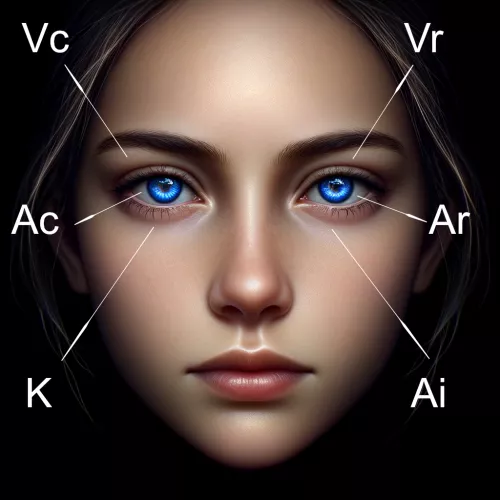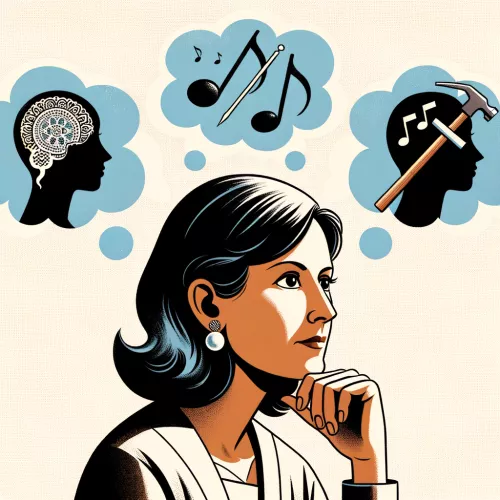Submodalities
A submodality is basically the way a person interprets or analyses a certain thing in its smaller parts or forms. An example of this can include the definition of “bright”. What may be quite dim to one person will be bright to another, and vice verca. It is by understanding that people interpret the same thing differently that we can begin to understand the way a certain person thinks or behaves based upon the conversation they use, or their body language. Submodalities are heavily based upon the representational system of an individual. Simply put, a representational system is the way a person thinks and processes information.

A visual representation of different perceptions of brightness, showcasing how one scene can be interpreted in varying degrees of light by different individuals.
Thinking is generally divided into one of the following three categories: Visual, Auditory or Kinesthetic. An example of a visual thought is someone visualising the waves crashing upon a beach when they are sitting inside their office. An example of an auditory thought would be imagining someone speaking, saying a certain word or phrase. A kinesthetic thought would involve imagining how something felt.

Illustration of a person in an office daydreaming about the beach, representing a visual thought process.
When we think of thoughts, be they visual, auditory or kinesthetic, we access different parts of our brain. Furthermore, the thoughts we think about may be either real (as in past experiences) or created (imagined). This subdivides the Visual, Auditory or Kinesthetic thoughts we may have into a total of six categories. In NLP, these categories of thought are referred to as Vc (Visual Constructed) for new images that we’re creating in our mind at the time, Vr (Visual remembered) for images that are in our memory that we’re recalling, Ac (auditory constructed) for new sounds that we’re creating, Ar (auditory remembered) for sounds that we’re recalling, Kinesthetic (as previously explained, thoughts where we imagine touching something), and Ai (auditory internal), which is the ‘voice’ inside our head that we think with.

Diagram showing the six categories of thought in NLP: Visual Constructed, Visual Remembered, Auditory Constructed, Auditory Remembered, Kinesthetic, and Auditory Internal.
People subconsciously move their eyes in accordance with the type of thought that they’re making, be it auditory, visual or kinesthetic, created or remembered. This is known as ‘eye accessing cues’. There is unfortunately no universal consistency with the way that people will move their eyes in accordance with the thought that they’re thinking, however the further we delve into NLP, the more educated guesses we can make based upon a person’s speech patterns and other body language as to how they access information.

Illustration of eye accessing cues, showing the different directions people may look based on the type of thought (Visual, Auditory, Kinesthetic).
As a general rule, the majority of people will move their eyes up and to the right when visually constructing thoughts (Vc), up and to the left when visually recalling thoughts (Vr), to the right when constructing auditory thoughts (Ac), to the left when recalling auditory thoughts (Ar), down and to the right when imagining how something feels (K), and down and to the left when using one’s internal voice (Ai).
Submodalities can become an incredibly complex and detailed field, however mastering submodalities is essential to mastering the art of establishing and maintaining rapport with a person. Without attempting to overwhelm you, all that is important that you understand at this stage are the following three things -
1. People interpret things differently to one another. Understanding the way someone interprets something is important to understanding the way that person thinks.
2. Submodalities refer to the way a person interprets things through their representational systems. People think of things in either a Visually Constructed (Vc), Visually Remembered (Vr), Auditory Constructed (Ac), Auditory Remembered (Ar), Kinesthetic (K) or Auditory Internal (Ai) manner, all of which are representational systems.
3. Eye accessing cues is one way that you can interpret the representational systems that a person is using. Remember that for Visual Thoughts many people look to the upper left or right, for Auditory thoughts people look to the left or right, for Kinesthetic thoughts people look to the lower right, and for Auditory internal thoughts people look to the lower left. These directions aren’t conclusive for all people, however do apply to the majority.

